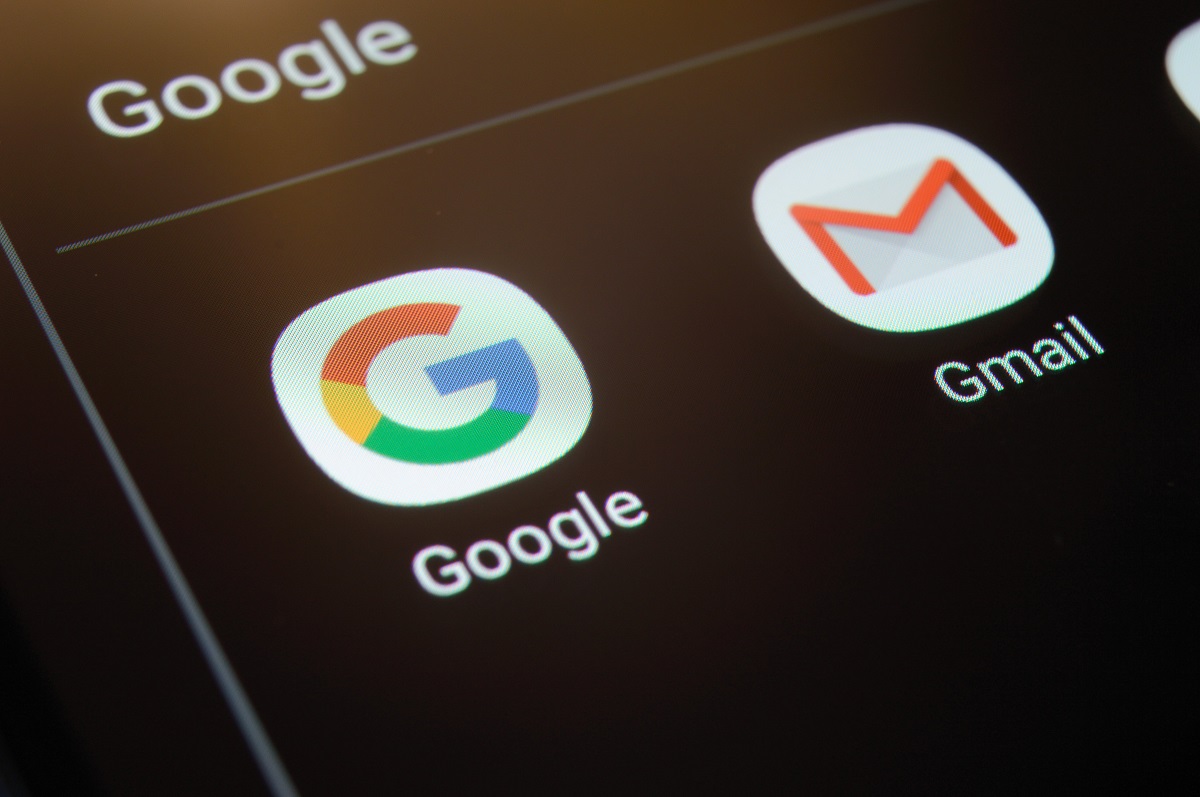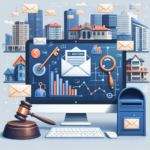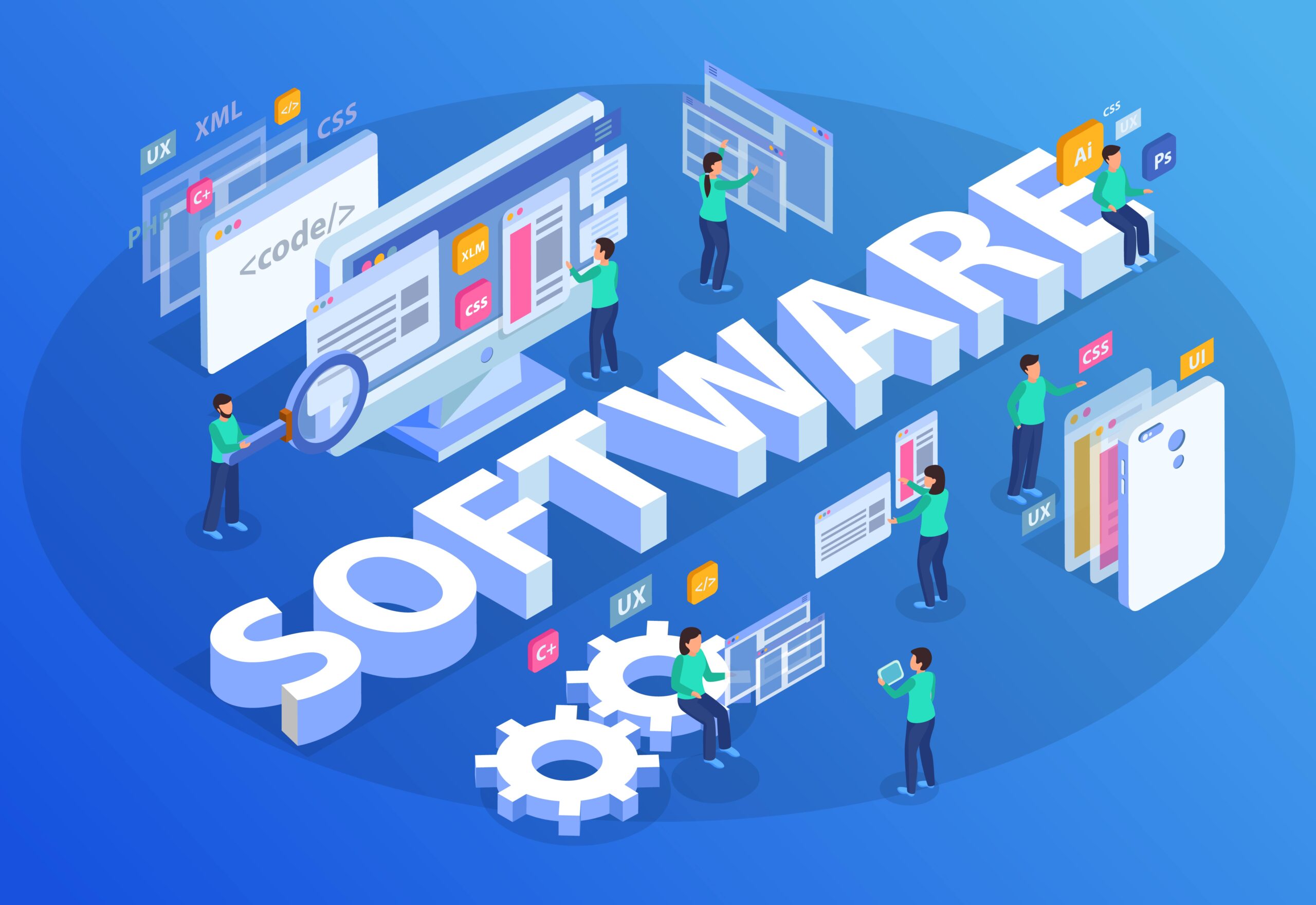Gmail’s New Requirements to Fight Spam: Adapt and Thrive
Get ready, because Gmail’s gearing up to tighten the reins on bulk email senders. By February 2024, new rules will kick in to keep our inboxes clean and secure. Think less spam and a better experience for everyone.
This isn’t just another update; it’s a major shift that’ll have every marketer rethinking their email game plan. We’re talking strict sender verification, smarter AI defenses at play, and hefty stats like blocking 15 billion unwanted emails daily.
So what does this mean for your business? You’ll learn how to stay ahead of the curve with DMARC policies, ensure you’re following best practices for email hygiene, and adjust your marketing strategies without missing a beat.
Table Of Contents:
- Understanding Gmail’s Upcoming Requirements for Bulk Senders
- The Evolution of Email Threats and Gmail’s AI Defenses
- The Impact of Gmail’s Security Measures on Spam and Malware
- Best Practices for Email Authentication and Hygiene
- The Future Landscape of Email Marketing with Gmail’s Changes
- Collaborative Efforts to Maintain a Secure Email Ecosystem
- Preparing Your Business for Gmail’s 2024 Bulk Sender Requirements
- Conclusion

Understanding Gmail’s Upcoming Requirements for Bulk Senders
Email marketers, brace yourselves. The landscape is shifting again. By February 2024, Gmail will tighten the reins on bulk senders to curb spam and enhance user security. These aren’t just minor tweaks; they’re significant changes aimed at keeping inboxes clean and cyber threats out.
The Impetus for Stricter Email Sending Standards
Why this sudden vigilance? It’s simple: as our digital lives become more complex, so do the threats we face. Spam isn’t just annoying anymore—it can be downright dangerous. Fraudsters are getting smarter and their tactics more sophisticated. So Gmail has decided it’s time to step up its game.
We’ve all been there—sifting through an inbox cluttered with emails you don’t remember signing up for or messages that seem slightly off-kilter somehow (hello phishing attempts). And here’s a fun fact: Google’s AI defenses currently stop over 99% of these unwelcome guests from crashing your email party.
Gmail aims to make those odds even better by cutting down on unauthenticated messages—a move that already reduced them by a whopping 75%. That means fewer fake sale alerts and scammy ‘you’ve won’ emails trying to lure you into clicking something nefarious.
Navigating the New Bulk Sender Guidelines
If you’re sending emails en masse, get ready for homework because things are about to change big time. Gone are the days when anyone could blast thousands of emails without much thought beyond content and click-through rates.
To stay ahead of evolving dangers online, Google demands that everyone plays detective alongside their marketing role—keeping an eye out not only for what works but also what keeps subscribers safe from harm’s way (Amazon Web Services Blog). Picture this as leveling up your email armor before going into battle against spam bots.

The Evolution of Email Threats and Gmail’s AI Defenses
Email threat actors have evolved like pesky weeds growing resistant sprays — their strategies constantly adapt in response to our defense mechanisms (Yahoo Postmaster Blog). In reaction, companies like Google have had no choice but sharpen their digital swords further using artificial intelligence (AI).
Key Takeaway:
Get ready to level up your email game. Gmail’s tightening its grip on bulk senders by February 2024 to fight spam and boost security. It’s not just about crafting catchy emails anymore; you’ll need to play detective too, ensuring subscriber safety is top-notch.
Email threats are like the flu; they constantly mutate, requiring stronger defenses each year. Think back to the early days when a simple spam filter was enough. Today? It’s an arms race where artificial intelligence (AI) leads the charge.
A Historical Perspective on Email Security Challenges
Remember when phishing emails were easy to spot with their dodgy grammar and outlandish promises? Those days are long gone. Fraudsters have become more sophisticated, crafting emails that mimic legitimate businesses down to the pixel. This is why Gmail has turned to AI-powered defenses, which now block over 99.9% of spam, phishing attempts, and malware from ever reaching our inboxes.
These security challenges remind us how important it is for email providers to stay ahead of cybercriminals who continuously evolve their tactics. Just as bacteria develop resistance to antibiotics, spammers tweak their strategies faster than you can say “unsolicited email.”
Gmail’s Counterattack: Advanced Machine Learning Algorithms
To keep up with these shapeshifting threats, Gmail doesn’t just play defense—it goes on offense with machine learning algorithms that learn as fast as scammers scheme. These aren’t your granddad’s filters; they’re smart systems designed by some of the brightest minds at Google working tirelessly behind screens—real-life heroes without capes if you will—to study patterns in vast data sets so intricate it would make your head spin.
Gmail scrutinizes every aspect of an incoming message—from its content down to metadata like senders’ IP addresses—and then cross-references this information against known threat signatures or abnormal behavior profiles established by trillions upon trillions of previous messages analyzed within its neural network fortress.
Tackling Zero-Day Attacks Head-On With Predictive Models
You know those sneaky zero-day attacks? They’re new viruses or exploits unknown even among cybersecurity circles until they strike outta nowhere. But here comes Gmail again wielding predictive models able not only detect but also anticipate such sneak attacks before most humans have had their first cup o’ joe for the day.
This isn’t sci-fi stuff folks—it’s real life where AI defends our digital well-being while we sleep soundly at night unaware that somewhere out there a virtual showdown took place safeguarding millions from potential harm all thanks due diligence taken by engineers dedicated ensuring safe cyberspace everyone enjoy freely without fear being victimized nefarious online plots lurking shadowy corners internet…
Key Takeaway:
Email threats are constantly evolving, but Gmail’s AI is a step ahead with advanced machine learning that blocks over 99.9% of danger before it hits your inbox.
By studying intricate data patterns and using predictive models, Gmail anticipates attacks—keeping you safe while you’re not even thinking about email security.

The Impact of Gmail’s Security Measures on Spam and Malware
Imagine your inbox as a fortress. Now, thanks to Gmail’s robust security protocols, the drawbridge is up and only the friendliest of emails can cross over. It’s no small feat considering that Gmail blocks nearly 15 billion unwanted emails every day. These unwanted guests include spam and malicious software designed to disrupt or damage users’ experience.
Assessing the Reduction in Unauthenticated Messages
Gmail has turned into an email guardian angel by drastically reducing unauthenticated messages – those lacking proper verification are like strangers trying to enter a private party without an invite. With new authentication requirements rolled out, we’ve seen these gatecrashers decline by a staggering 75%. That means for every four dubious characters previously lurking around your inbox, three have been shown the door.
This isn’t just about keeping annoyances at bay; it’s serious business when it comes to safeguarding personal information from phishing attempts and malware attacks which could lead not only to data loss but also identity theft.
In real terms? Imagine if you were receiving junk mail non-stop through your letterbox at home—now cut that pile down significantly so that most days there might be nothing but bills (and who wants more of those?). The digital world often feels intangible until something goes wrong; with fewer bad actors slipping past Gmail’s defenses, we’re seeing tangible improvements in our online safety net.
A Historical Perspective on Email Security Challenges
Email threats aren’t what they used to be—they’ve evolved from simple nuisances into sophisticated cyber-threats aiming for personal gain. In response, services like Gmail have had no choice but evolve too—a veritable arms race between hackers attempting innovative infiltrations and email providers beefing up their defense systems.
We’re now looking at AI-powered fortifications where machine learning algorithms patrol millions of lines code-deep beneath user interfaces ensuring all remains well above ground level (or rather within our inboxes). And believe me when I say they’re doing one heck of job: Google boasts its AI defenses stop more than 99.9% of spam, phishing attempts, and malware dead in their tracks before ever reaching us mere mortals checking our morning emails over coffee.
Key Takeaway:
Gmail’s security is like a fortress for your inbox, slashing unauthenticated emails by 75% and keeping out spam and malware. It’s an arms race where Gmail stays ahead with AI defenses that block 99.9% of digital threats, making our online world safer.

Best Practices for Email Authentication and Hygiene
The Role of DMARC in Email Security
Email fraud is a big deal, right? It’s like those sneaky identity thieves trying to crash your digital party. That’s where DMARC comes into play—it stands as the bouncer at the door of your inbox. Domain-based Message Authentication, Reporting & Conformance (DMARC) is not just another techie acronym; it’s essential armor in protecting against imposters and keeping emails legit.
This protocol works by checking that an email claiming to come from a certain domain really does hail from there. Imagine sending out VIP invites—DMARC ensures no one gatecrashes with fake passes. If you’re thinking this sounds similar to SPF (Sender Policy Framework) or DKIM (Domain Keys Identified Mail), you’re on point. But here’s the kicker: DMARC uses both SPF and DKIM results combined with its policy requirements before giving an email two thumbs up.
If you want a seat at Gmail’s table after February 2024, tightening up your DMARC game isn’t optional—it’s mandatory. For businesses who’ve mastered their email marketing kung fu, rolling out robust DMARC policies can be their next power move to combat spam.
Essential Steps to Ensure Compliance with Gmail Standards
You’ve got until February 2024 before Gmail puts its foot down on bulk senders—but why wait when you could start flexing those compliance muscles now? Here are some bench-press-worthy steps:
- Analyze Your Sending Patterns: Keep tabs on how much mail you’re pumping out daily. There’s strength in numbers but also wisdom—you need insights into what kind of volume we’re talking about here.
- Audit Your Sender Reputation: Just like street cred matters in real life, sender reputation is gold online. Are people marking your messages as spam or are they opening them eagerly? Knowing where you stand helps fix any issues fast.
- Clean Up Those Lists.: Regularly dust off that subscriber list because dead-end addresses aren’t doing anyone favors—not even digital tumbleweeds roll through abandoned emails.
- Tighten Technical Defenses:: This means getting intimate with SPF records and making sure your DKIM signatures aren’t forged—and if these terms sound Greek to you now… well, time for some homework.
Key Takeaway:
Think of DMARC as your email’s personal bodyguard, keeping the fakes at bay. To keep up with Gmail and their 2024 policy change, get proactive: watch your sending habits, check your sender rep, clean out old emails, and brush up on SPF and DKIM. It’s time to buff up that email security.

The Future Landscape of Email Marketing with Gmail’s Changes
As the digital world evolves, so does the need for robust email marketing strategies. Gmail is at the forefront, rolling out new requirements that will redefine how marketers approach their campaigns.
Adapting Marketing Strategies for Better Engagement
Gmail has made it clear: come February 2024, bulk senders must step up their game to stay in users’ good graces—and inboxes. This isn’t just about dodging spam filters anymore; it’s a strategic pivot to foster trust and deliver value.
What does this mean? Think personalized content over mass blasts. With Gmail sharpening its AI defenses against spam—which already intercepts over 99.9% of junk—generic messages won’t cut it. Marketers have got to be more like savvy conversationalists and less like street vendors hawking wares to anyone who’ll listen.
To keep engagement high under these tighter guidelines, segmentation becomes your best friend. By carving your audience into niche groups based on behaviors or preferences, you can tailor messages that resonate on a personal level—a win-win for both sender reputation and customer satisfaction.
Crafting Quality Content That Resonates
Audiences crave quality—it’s what makes them open one email while ignoring another from the same brand moments later. In light of Gmail’s upcoming changes, every word counts even more than before.
Email copywriters are turning into wordsmith warriors armed with wit and relevance as their weapons of choice because when emails feel like they’re written by an actual human being rather than churned out by some faceless machine—that’s when magic happens in click-through rates.
Leveraging Data-Driven Insights for Precision Targeting
Data is not just numbers crunched by analysts behind closed doors; data is storytelling gold waiting to be mined properly—for example through predictive analytics tools now crucially important due to stricter sending rules set by platforms such as Yahoo..
Key Takeaway:
Get ready to chat, not shout. Gmail’s new rules for February 2024 mean marketers must ditch the mass email blasts and get personal with tailored content if they want a spot in the inbox.
Audiences dig quality—craft emails that sound human and use smart data insights to hit your targets right where it matters.

Collaborative Efforts to Maintain a Secure Email Ecosystem
Email security is like a group project; everyone has their part, and when we all pitch in, the result is something solid. Imagine every user as an individual puzzle piece. Alone they’re just bits of an image, but together, they create a complete picture of email safety.
The Shared Responsibility in Email Security
Gmail takes spam seriously – it’s why they’ve got AI defenses that block over 99.9% of junk from hitting our inboxes. But this isn’t just Google flexing its tech muscles; it’s also about you and me doing our bit to keep things clean.
We can start by being wise about what we click on and ensuring our own emails are legit before sending them out into the world. It’s not rocket science: if your email looks fishy or smells phish-y (pun intended), Gmail’s AI will probably snag it faster than you can say “unsolicited newsletter.”
It gets better because Gmail isn’t alone here—they’ve teamed up with Yahoo through shared efforts, aiming for less spam across the board. And let’s face it – nobody wants their inbox looking like a digital landfill.
Think authentication rituals:
- SPF records? Check.
- DKIM signatures? Got ’em.
- A DMARC policy? You betcha.
If these terms sound more complicated than assembling IKEA furniture without instructions, don’t sweat it—just know that each one helps verify who’s really behind those emails trying to sell you oceanfront property in Arizona (spoiler alert: there’s no ocean).
Navigating New Standards Together
Come February 2024, bulk senders have new hoops to jump through courtesy of Gmail’s updated requirements aimed at slamming the door on spammers’ faces (you heard right,) No free rides on this train. We’re talking mandatory verification seals—a green light showing emails come from where they claim.
- Dig into SPF – think sunscreen for your domain so impostors get burned instead of breezing past filters.
- Consider the intricacies of DKIM – Delve into its mechanisms and understand how it strengthens email security.
Key Takeaway:
Email security is a team sport, and Gmail’s new spam-fighting rules are the latest playbook. Think of it as Internet hygiene—keep your clicks smart and your emails clean to stay in the game.
Get familiar with SPF, DKIM, and DMARC—it’s like knowing the secret handshake that proves you’re one of the good guys.
Heads up for February 2024: Gmail’s raising the bar for bulk senders. Verification will be key to ensuring your emails aren’t left on read—or worse, marked as spam.

Preparing Your Business for Gmail’s 2024 Bulk Sender Requirements
Gmail is stepping up its game to shield users from spam and malicious content. By February 2024, the bar will be raised for bulk senders with a set of fresh requirements aimed at enhancing email security and user experience. It’s crucial for businesses relying on email marketing to stay ahead of these changes.
The Impetus for Stricter Email Sending Standards
Why this sudden change? Simply put, threats in digital communication are growing more sophisticated every day. Gmail has observed an urgent need to fortify its defenses against these evolving threats. As part of this initiative, they’re tightening the reins on what it takes to pass muster as a legitimate sender.
This isn’t just about keeping annoying emails out of inboxes; it’s also about protecting users from potential cyber-attacks that could come masquerading as innocent promotions or newsletters.
Navigating the New Bulk Sender Guidelines
Bulk sending used to be straightforward: compile your list, craft your message, hit send, and cross your fingers hoping you won’t end up in spam folders. Not anymore. The upcoming guidelines mean you’ll have to dot your i’s and cross your t’s if you want those emails delivered successfully.
To get ready for 2024’s changes:
- Authenticate like there’s no tomorrow: Make sure every campaign passes SPF (Sender Policy Framework) checks so recipients know it’s really you behind those messages.
- Pull back the curtain on who sent it: With DKIM (DomainKeys Identified Mail), attach a digital signature proving ownership.
- Rally around reputation management: A solid sender score can make all the difference between inbox placement or being sidelined into obscurity by spam filters.
Conclusion
So, you’ve seen the lay of the land. Gmail new requirements to fight spam are changing things up, and they’re doing it for good reason. You now know stricter verification is on its way and AI defenses are getting smarter.
Dive into DMARC; that’s a big one. It’ll be your shield against identity spoofers out there. Remember those steps for compliance? They aren’t just hoops to jump through; they’re stepping stones to better email marketing.
Keep your eye on the ball—email hygiene matters more than ever before. And when it comes to adapting strategies, think agility over rigidity.
This isn’t about hurdles; it’s about opportunity—the chance to make sure every message counts in an inbox that’s safer by design.












